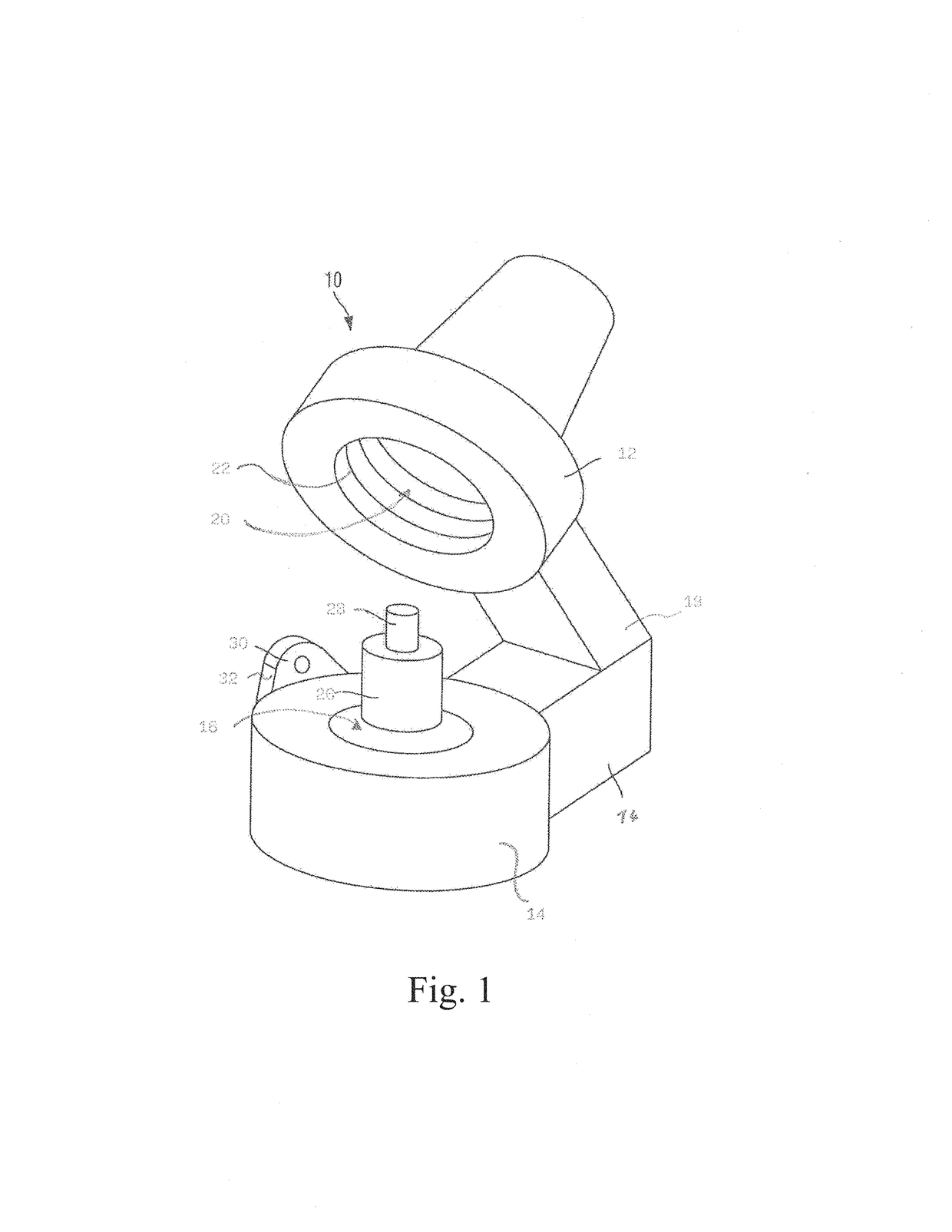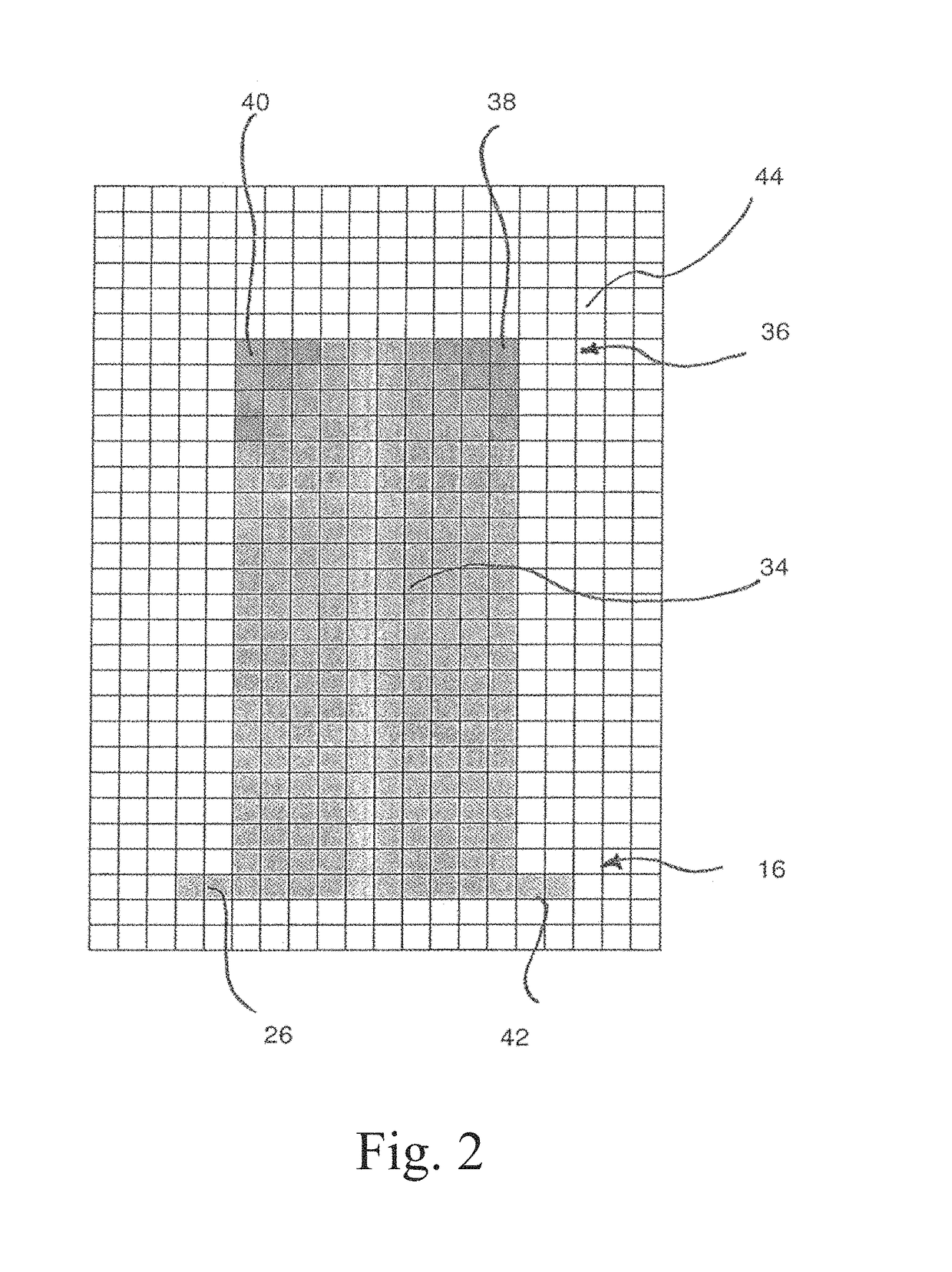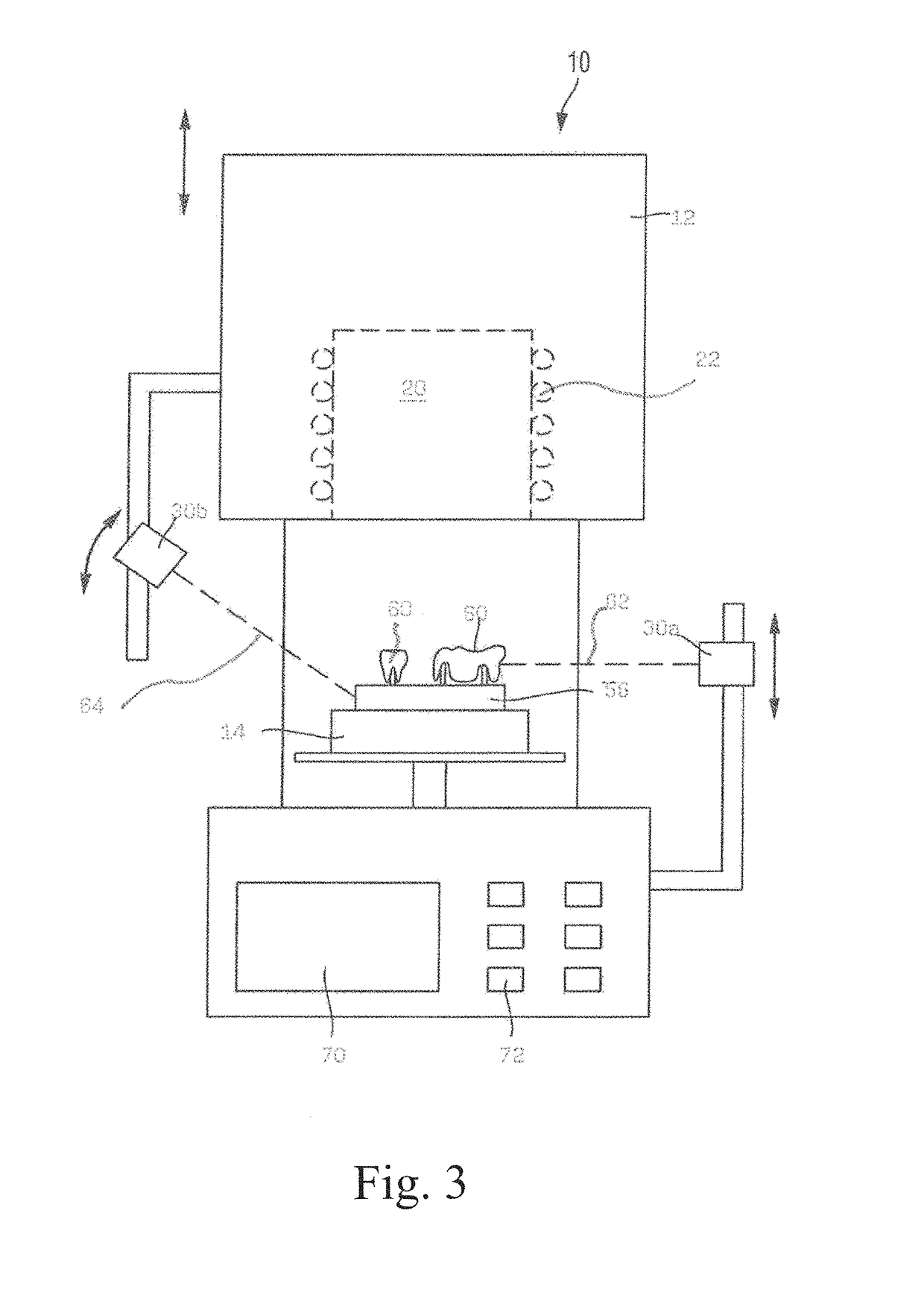Dental furnace
a technology for dental objects and furnaces, applied in furnaces, muffle furnaces, lighting and heating apparatus, etc., can solve the problems of difficult to align the sensors according to the facts, the temperature of dental objects cannot be exactly represented, and the attachment of dental objects is not practicable in practi
- Summary
- Abstract
- Description
- Claims
- Application Information
AI Technical Summary
Benefits of technology
Problems solved by technology
Method used
Image
Examples
Embodiment Construction
[0076]In FIG. 1 a dental furnace 10 is illustrated which is formed as a press furnace in the exemplary case.
[0077]The furnace comprises a firing hood 12 and a furnace bottom 14 with a firing chamber floor 16. The firing hood 12 is mounted to the furnace bottom 14 via a joint 18 which is not defined in detail and illustrated only schematically to carry out lifting and tilting movements. It is formed in the shape of a hood and therefore surrounds the firing chamber 20. At its periphery it is provided with a firing chamber heating 22 in a way known per se.
[0078]The firing chamber 20 as well as the firing hood 12 are formed in a circular manner, wherein the firing chamber has substantially the shape of a hollow cylinder. Thus, it is suitable for receiving cylindrical muffles which are used for the pressing of dental restoration parts. A muffle 26 of this type is illustrated in FIG. 1 on the firing chamber floor 16. For producing the dental restoration part the muffle is loaded with a kn...
PUM
 Login to View More
Login to View More Abstract
Description
Claims
Application Information
 Login to View More
Login to View More - R&D
- Intellectual Property
- Life Sciences
- Materials
- Tech Scout
- Unparalleled Data Quality
- Higher Quality Content
- 60% Fewer Hallucinations
Browse by: Latest US Patents, China's latest patents, Technical Efficacy Thesaurus, Application Domain, Technology Topic, Popular Technical Reports.
© 2025 PatSnap. All rights reserved.Legal|Privacy policy|Modern Slavery Act Transparency Statement|Sitemap|About US| Contact US: help@patsnap.com



